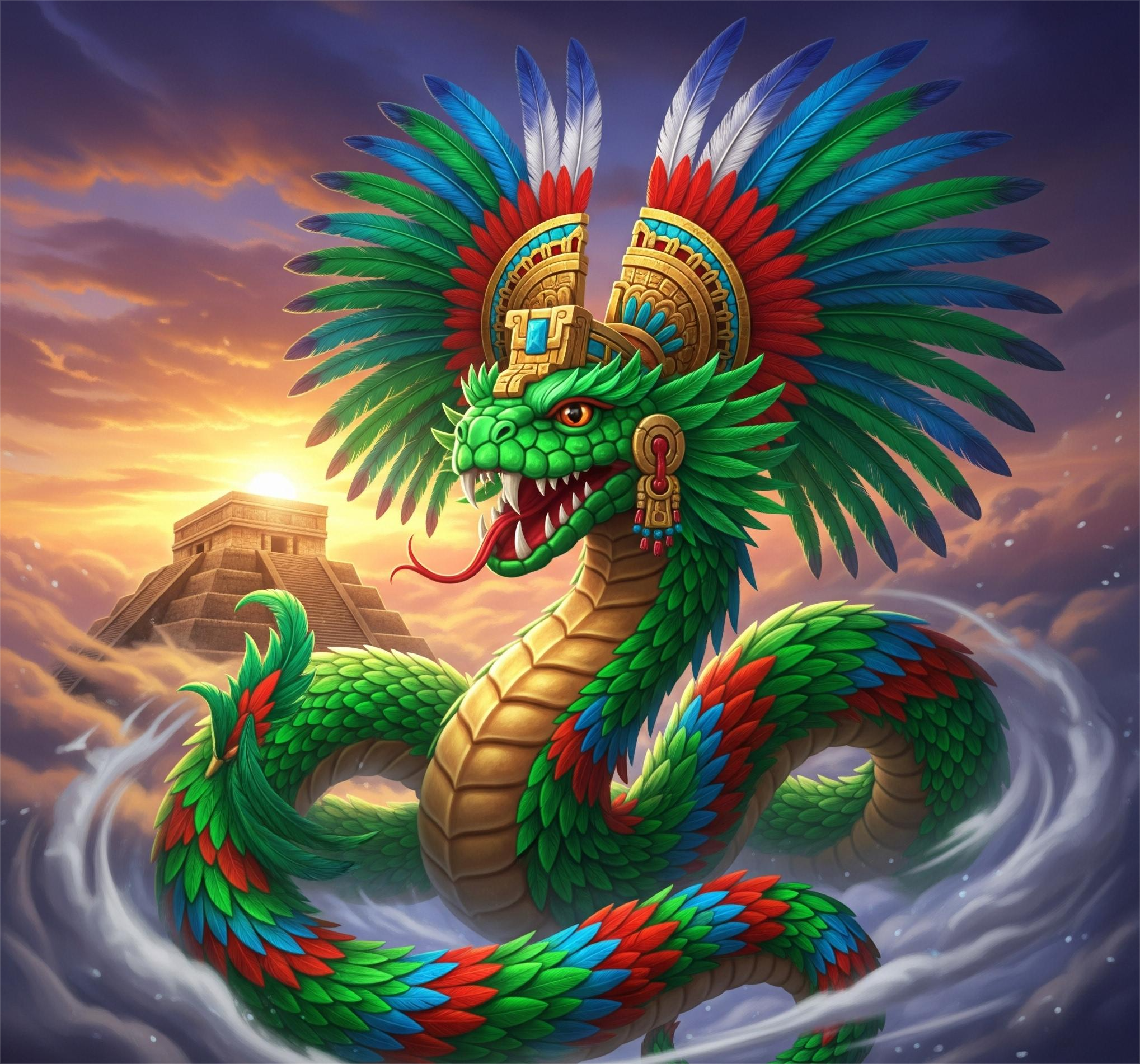Among the pantheon of Mesoamerican gods, Quetzalcoatl stands as one of the most powerful, complex, and enduring deities. Known as the "Feathered Serpent," Quetzalcoatl was a god of creation, wisdom, wind, and renewal—a figure who bridged the natural and divine realms. His worship spanned multiple civilizations, including the Olmec, Teotihuacan, Maya, Toltec, and most famously, the Aztec.
Who Was Quetzalcoatl?
The name Quetzalcoatl is derived from the Nahuatl words quetzalli (precious feather) and coatl (serpent), symbolizing a divine being that united the sky (feathers) and the earth (serpent). This hybrid imagery expressed the god’s dual nature—both ethereal and earthly, human and divine.
Across centuries and cultures, Quetzalcoatl was revered as:
God of wind and learning (Ehecatl-Quetzalcoatl in some depictions)
Patron of priests, scholars, and artisans
Bringer of maize (corn) to humanity
Creator deity, responsible for shaping the cosmos and humankind
Moral guide, associated with light, order, and civilization
Origins and Early Worship
Quetzalcoatl's earliest known worship dates back to the Olmec civilization (c. 1400–400 BCE), where serpent iconography is abundant. However, it was at Teotihuacan (c. 100–550 CE), one of the most influential ancient cities of Mesoamerica, that the Feathered Serpent reached new heights. The Temple of the Feathered Serpent—part of the city's sacred Avenue of the Dead—is richly decorated with serpent heads adorned with feathers, clearly identifying the deity’s early prominence.
Later civilizations like the Toltecs and Aztecs would adopt and reinterpret Quetzalcoatl’s mythos.
Quetzalcoatl in Aztec Mythology
To the Aztecs, Quetzalcoatl was one of the four major creator gods and played a central role in shaping the current world. According to myth:
He descended into the underworld (Mictlan) with his twin, Xolotl, to retrieve the bones of earlier humans. He ground these bones and mixed them with his blood to create modern humanity.
He opposed human sacrifice, in contrast to other gods like Tezcatlipoca, his rival.
He was a culture hero, credited with bringing agriculture, the calendar, and sacred knowledge to humans.
In Aztec stories, Quetzalcoatl is portrayed as a wise, benevolent figure—a contrast to many violent or chaotic deities. However, even he experienced exile, disgrace, and transformation, emphasizing the cyclical nature of power and morality in Mesoamerican belief.
The Feathered Serpent’s Many Faces
Quetzalcoatl was not worshiped in the same way everywhere. Among the Maya, a similar figure appears as Kukulkan in Yucatán and Qʼuqʼumatz among the K’iche’. Like Quetzalcoatl, these gods were associated with creation, wind, and sky, often linked with serpent imagery and depicted descending from the heavens.
The cross-cultural presence of the Feathered Serpent suggests a shared Mesoamerican religious framework, where gods evolved yet remained familiar across linguistic and ethnic lines.
Colonial Misinterpretation and Historical Myth
When Spanish conquistadors arrived in the 16th century, some accounts—especially from later sources—suggested that the Aztecs mistook Hernán Cortés for the returning Quetzalcoatl, due to his fair skin and timing (the year 1 Reed in the Aztec calendar, associated with Quetzalcoatl’s return).
However, modern historians debate the truth of this claim, arguing it may have been a colonial fabrication to justify conquest. Still, it reveals how deeply embedded the Quetzalcoatl myth was in Mesoamerican consciousness—even as the world around them changed violently and forever.
Symbolism and Legacy
Even after the fall of the Aztec Empire, Quetzalcoatl remained a symbol of:
Cultural identity for indigenous peoples resisting colonial rule
Knowledge and enlightenment, often invoked by modern scholars and artists
Unity of opposites, embodying life and death, light and dark, human and divine
Today, the Feathered Serpent appears in literature, murals, public monuments, and even video games. He continues to fascinate as a symbol of mystery, transformation, and enduring wisdom.







